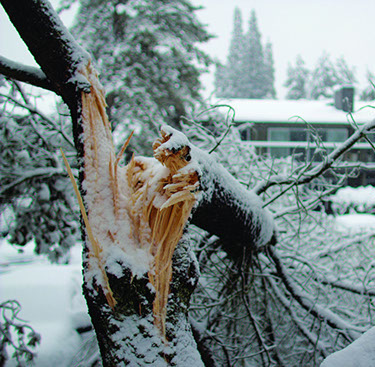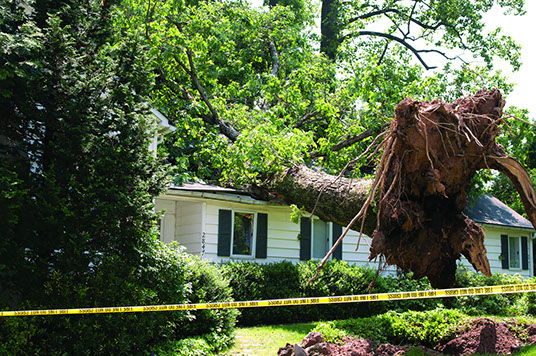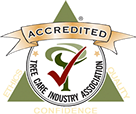
Fall 2018

Safety:
Storm Damage Prevention and Tree Risk Assessment
We’ve had quite a few bad storms in our region recently and experts predict there will be more this year. According to the Farmer’s Almanac, “winter temperatures will be much above normal for the Atlantic corridor.” This means there will be heavier precipitation, stronger storms and higher winds. It could result in increased storm damage to trees and property.
Now is a good time to ask your arborist to examine the trees on your property. Often times, tree weakness is not obvious and may need a trained eye and specialized equipment to diagnose. Even in cases where the danger can be easily seen, like dead or hanging branches, it is always better to call your arborist to seek an expert opinion.
For mature trees, here are some strategies your arborist may suggest that can prevent or minimize storm damage:
Pruning to remove dead or defective branches that are more susceptible to failure during a storm, especially when a target is involved.
- Performing selective branch-end thinning to reduce drag and wind resistance, mimicking a natural retrenchment process that mature trees follow. This type of pruning can be prescribed for an entire crown or sometimes on individual branches over-extending the natural crown. It can reduce the chances of branch or entire tree failure (uprooting).
- Using cabling to minimize movement and provide additional structural support — especially for trees with codominant branches or trunk attachments with included bark.
- Adding a lightning protection system that will ensure lightning will conduct into the soil without harming the tree or the electrical house components. Very tall trees, especially within 15-20 feet of your home’s foundation, are ideal candidates for this installation.
- If you’ve used Almstead for new tree plantings, your arborist may have already put some prevention strategies in place, such as:
- Picking a location with enough soil volume to accommodate proper root growth as well as canopy size in maturity.
- Ensuring the right tree for the right place — trees that are matched to site conditions such as sun exposure, soil moisture, urban stresses (salt), compaction, drought and unique micro-climates.
- Choosing good quality nursery stock and checking for branch structure defects, trunk injury and girdling roots.
- Managing the site where the tree is planted until establishment which could typically take 3-5 years or more depending upon the size of the tree.
Tree Risk Assessment

If you would like to go beyond a standard visual inspection, one of the most valuable services we offer our clients is Tree Risk Assessment. All our arborists are trained to visually inspect trees when they are on site for potential issues with trunk, crown, surface root zone or trunk flare. Many of our arborists also have the additional Tree Risk Assessment Qualification (TRAQ), a rigorous training program and certification from the International Society of Arboriculture (ISA). In addition to basic tree information such as species, diameter, and crown spread, the TRAQ system records and evaluates other detailed information about each tree.
The process considers the history of the tree, evaluates its location and condition of health, identifies visual defects from the ground for tree’s trunk flare, trunk and branches, identifies all potential targets, usage frequency of those targets and the consequences of failure. This entire analysis provides a risk rating over a period of time. However, if mitigation is recommended it may or may not reduce this level of risk. Sometimes additional testing is recommended in order to seek better information.
This can include using specialized tools such as a Resistograph or Tomography (to better detect the degree of internal decay), or an aerial inspection (with a seasoned and experienced field staff) to provide more data on crown structure and defects that cannot be seen from the ground. TRAQ is the most detailed and comprehensive option available for the complete analysis of each tree and its risk of failure.
If you feel you may have a tree that requires this additional level of assessment, please contact your local branch office to set up an appointment with a TRAQ certified Almstead arborist.


LOCATIONS:
Lower Westchester County, NY and New York City
58 Beechwood Ave, New Rochelle, NY 10801
914-576-0193
Upper Westchester (North of I-287)
15 Broadway, Hawthorne, NY 10532
914-741-1510
Fairfield County, Connecticut
547 Hope Street, Stamford CT 06907
203-348-4111
Bergen & Passaic Counties, NJ
504 High Mountain Road, North Haledon, NJ 07508
973-636-6711
Contact us for a Free Consultation